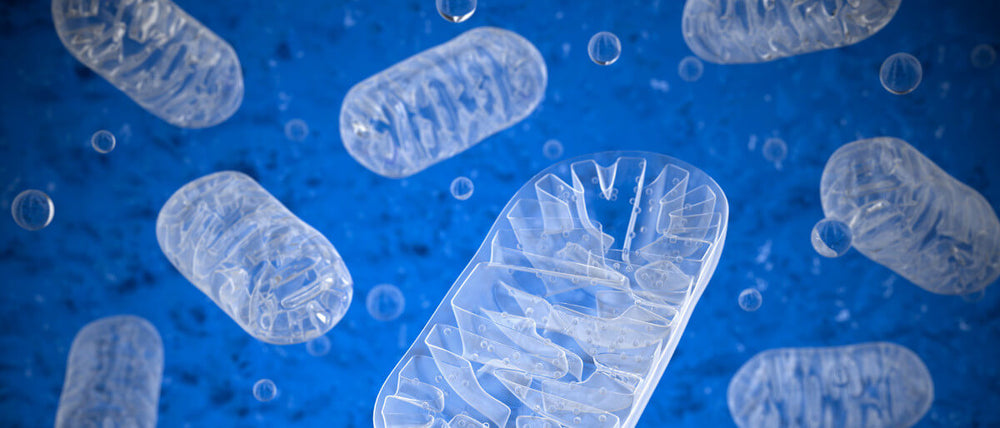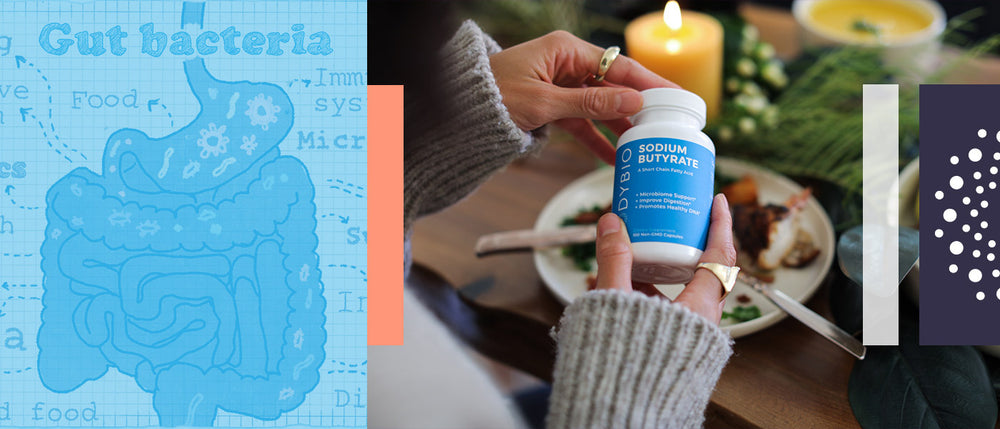Truth About Magnesium Stearate
We’ve all seen pitchmen, the medium-pressure peddlers who unashamedly try to lure us to their side of the street with great deals on auto insurance or oxygenated household cleaners. Forceful voices and rapid chatter are attention grabbers. But it needn’t be fast talk and loud volume that get our attention. It can be capital letters, bold print, fancy fonts, or any combination of these on the internet that tries to persuade or dissuade us from buying, doing, ingesting or using a tangible or intangible thing.
Recent internet talk, some by celebrity physicians, has focused on—and maligned—magnesium stearate, an innocuous substance used in the pharmaceutical and supplement industries as an excipient. Yes, it does have lubricative properties that prevent adhesion of a material to the tumbling and pressing surfaces of a tablet forming machine, but more importantly, it helps to ensure consistency and homogeneity of the finished product. It guarantees even distribution of the active ingredients in a tablet or capsule, so that each is identical to the last and the next. Acting as a flow agent, magnesium stearate lowers manufacturing costs, as well. Were this not the case, consumer dander would rise to greet the consequent price increase. If the active ingredient of a medication or supplement did cling to machine surfaces, dosages would be hit or miss. The average amount of magnesium stearate in a tablet or capsule is far less than 1.0% of the total weight, with many supplement makers using fractional amounts, down to thousandths of a percent.
Pharmaceutical and supplement companies are not deaf to consumers’ interests. They add only that amount of magnesium stearate necessary to the desired outcome, changing according to a specific blend. The variables involved in drug or nutrient manufacturing are numerous. Particle size of the main ingredient, moisture content, chemical nature, solubility, cohesive properties, mixing order of the components, electrostatic forces that cause factory explosions, mixing time, hydrophobicity, dissolution expectations, and factors herein unknown contribute to the complexity of the process. Each step is carefully monitored as part of a fail-safe system employed by responsible, accountable, cGMP-compliant companies. Sadly, there are those businesses that perpetrate fraud against consumers knowingly. It is these who market supplements for a buck ninety-nine. It is these whose cut-rate pharmaceuticals yield undesirable effects.
What started all the hoopla about magnesium sulfate is a 1990 report whose conclusions were never put to use. This was a preliminary cell study that sought an immunosuppressive drug for people with organ transplants and autoimmune diseases. In the experiments, T cells and B cells were exposed to a concoction that mixed stearic acid with diatomaceous earth and bovine albumin—a little different from magnesium stearate. The intent of the study was to injure T cells with the brew after they were exposed to a toxic challenge, meaning that exposure to the cocktail had to be adequate to damage them. Any association with pharmaceuticals or supplement manufacture escapes even a casual reader. What is particularly bothersome is the faulty conclusion that stearic acid destroys T cells and is, therefore, immune toxic. The study’s title is incriminating to stearic acid: “Molecular basis for the immunosuppressive action of stearic acid on T cells,” having appeared in the journal Immunology in July, 1990. B cells in this test were unscathed, while T cells lost membrane integrity to stearic acid influx, which increased membrane rigidity. Only stearic acid, the 18.0 saturated fat common to chocolate and lean beef, was implicated. The roles of diatomaceous earth and bovine albumin remain a mystery. The former is an industrial filtering component and filler for paints and abrasives. The latter is a protein concentration standard used in cell cultures and immunohistochemistry because it has no effect on enzymes that do not need it for stabilization, and it takes part in very few biochemical reactions. Bovine albumin is inexpensive, too.
In the study, stearic acid was likened to the anti-rejection drug, cyclosporine, which suppresses the immune system following allograft. This drug is also selectively used to treat severe cases of psoriasis, rheumatoid arthritis, atopic dermatitis, and even dry eyes as an ophthalmic emulsion. But its adverse effects are numerous and intense, and it is suspected of carcinogenicity. If stearic acid, with zero side effects, could replace cyclosporine, it would be a welcome alternative. However, doses would have to exceed the no-effect level of magnesium stearate’s 2500 mg/kg of bodyweight/day (Søndergaard, 1980). That equates to 6 ounces of magnesium stearate for a 150-pound person each day.
Magnesium stearate is a compound of magnesium and solid organic acids, containing two equivalents of stearate and one of magnesium. The magnesium moiety is used to address conditions besides hypomagnesemia. Laxation aside, this mineral has been applied to respiratory and cardiovascular needs, aberrant lipid profiles, neuromuscular and neuroskeletal diseases, ADD/ADHD and other behavior disorders, restless leg syndrome, migraine headaches, and prevention of hearing loss, among others. Being the second most plentiful cation in the human body, magnesium is involved in more than three hundred enzyme systems and is divided almost equally between bone and soft tissue. A fraction of magnesium sits on the surface of bone, acting as a reservoir to maintain the extracellular magnesium concentration. Fifty-five percent of plasma magnesium is free; about thirty percent is bound to proteins. The rest is complexed to anions.
Absorption of supplemental magnesium, probably occurring in distal duodenum, is inversely proportional to the amount ingested. Even dietary (from foods) mineral enjoys only about one-third absorption, depending on body stores and physiological/metabolic needs. In supplements, magnesium oxide is the least bioavailable; citrate and glycinate among the more available. Enteric coating reduces absorption.
Magnesium deficit is associated with cardiac arrhythmia, cessation of bone growth (activity of osteoclasts and osteoblasts), muscle spasticity, anorexia, seizures, confusion, muscle cramping and hypertension, among other disorders. Such deficiency is common in diabetes, malabsorption syndromes, alcohol abuse, and in extended use of thiazide and loop diuretics. Magnesium is intimately linked to calcium in the manufacture of adenosine triphosphate (ATP). On the other hand, they antagonize each other in the synthesis of nucleic acids and proteins. In some ways, magnesium is nature’s calcium channel blocker because it regulates the intracellular flow of calcium ions. The virtues of magnesium extend beyond the scope of this newsletter, but it is worth noting that foods high in fiber are usually good sources of magnesium.
Stearic acid is one of the most common long-chain fatty acids, found in both animal and vegetable fats, appearing in foods in amounts far greater than in any supplement. This fatty acid is the immediate precursor to oleic acid, an important fatty acid in olive oil. Studies in humans have determined that stearic acid, desaturated to oleic acid by the liver, is less apt to elevate cholesterol than other saturated fatty acids, possibly due to absorption vagaries. Nonetheless, the rapid conversion of stearic to oleic acid suggests that stearic acid is as effective as oleic acid in lowering plasma cholesterol when it replaces palmitic acid in the diet (Bonanome, 1988). But more dramatic is the finding that stearic acid may be toxic to cancer cells. Decreased cell membrane rigidity is a characteristic of malignant cells, partly because of the desaturation of stearic acid. British tests that examined a chemically-induced murine mammary carcinoma line discovered that subcutaneous administration of stearic acid at weekly intervals prevented tumor development (Habib, 1987). Later study found that stearic acid inhibited colony forming abilities of several human cancer cell lines (Fermor, 1992). The innocuous nature of stearic acid had been established well before it was maligned as being part of a “persona non grata” molecule.
The street vendors have declared magnesium stearate as causative of intestinal biofilms that interfere with absorption of nutrients and foods. Yet, no proof is offered. To the contrary, the molecules used by micro-organisms to make biofilms are inhibited by stearic and several other saturated fatty acids (Soni, 2008). Since most people have never heard of biofilms, mentioning them as ominous factors is an effective marketing tool. The bacteria that form biofilms to protect themselves use polyunsaturated fats to flourish by injecting a fat with an oxygen molecule in order to form an oxylipin, which is a pro-inflammatory eicosanoid. It is not likely that a saturated fat has room to accept another atom, much less a molecule.
Even though FDA credibility has raised a few eyebrows in recent years, it is generally accepted that its revised 2006 Code of Federal Regulations is reliable. Title 21, Volume 3 of that tome allows that stearic acid is a GRAS substance that can be used according to Good Manufacturing Practices (GMP’s).
The science agrees that magnesium stearate is a safe analog of stearic acid. Red meats, chocolate products and Brazil nuts are ordinary sources of stearic acid. Despite its fat content, chocolate does not have any adverse effect on plasma lipids, not even milk chocolate. Stearic acid deserves not to be spoken in the same sentence with other saturated fats (Kris-Etherton, 1994). In fact, stearic acid has shown itself to increase excretion of endogenous cholesterol (Schneider, 2000) and even to lower LDL’s compared with other fatty acids (Mensink, 2005). If at fault, the worst that magnesium stearate does is to prolong dissolution of the main ingredient. Does it matter whether it comes from animal or vegetable sources? Concerning dissolution and safety, no. Concerning the force needed to eject a tablet from its mold, the animal-derived product has stronger adhesion properties (Hamad, 2008). Paracelsus, the Renaissance physician held to be the father of toxicology, pointed out that the dose makes the poison. In that matter, water can be a lethal substance. Beware of misleading and inaccurate information.
Baer DJ, Judd JT, Kris-Etherton PM, Zhao G, Emken EA. Stearic acid absorption and its metabolizable energy value are minimally lower than those of other fatty acids in healthy men fed mixed diets. J Nutr. 2003 Dec;133(12):4129-34.
Bonanome A, Grundy SM. Effect of dietary stearic acid on plasma cholesterol and lipoprotein levels. N Engl J Med. 1988 May 12;318(19):1244-8.
Buttke TM, Cuchens MA. Inhibition of lymphocyte proliferation by free fatty acids. II. Toxicity of stearic acid towards phytohaemagglutinin-activated T cells. Immunology. 1984 Nov;53(3):507-14.
Denke MA. Effects of cocoa butter on serum lipids in humans: historical highlights. Am J Clin Nutr. 1994 Dec;60(6 Suppl):1014S-1016S.
Denke MA. Role of beef and beef tallow, an enriched source of stearic acid, in a cholesterol-lowering diet. Am J Clin Nutr. 1994 Dec;60(6 Suppl):1044S-1049S.
Eddington ND, Ashraf M, Augsburger LL, Leslie JL, Fossler MJ, Lesko LJ, Shah VP, Rekhi GS. Identification of formulation and manufacturing variables that influence in vitro dissolution and in vivo bioavailability of propranolol hydrochloride tablets. Pharm Dev Technol. 1998 Nov;3(4):535-47.
Fermor BF, Masters JR, Wood CB, Miller J, Apostolov K, Habib NA. Fatty acid composition of normal and malignant cells and cytotoxicity of stearic, oleic and sterculic acids in vitro. Eur J Cancer. 1992;28A(6-7):1143-7.
Firoz M, Graber M. Bioavailability of US commercial magnesium preparations. Magnes Res. 2001 Dec;14(4):257-62.
GRAS Substances (SCOGS) Database Select Committee on GRAS Substances (SCOGS) Opinion: Stearic acid (packaging) Stearic acid (packaging) SCOGS-Report Number: 54* Type Of Conclusion: 1 ID Code: 57-11-4 Year: 1975 21 CFR Section: 184.1090
Habib NA, Hershman MJ, Salem R, Barker W, Apostolov K, Wood CB. Increased erythrocyte stearic acid desaturation in rats with chemically induced colorectal carcinomas. Int J Colorectal Dis. 1987 Feb;2(1):12-4.
N. A. Habib, C. B. Wood, K. Apostolov, W. Barker, M. J. Hershman, M. Aslam, D. Heinemann, B. Fermor, R. C. Williamson, W. E. Jenkins Stearic acid and carcinogenesis. Br J Cancer. 1987 October; 56(4): 455–458.
Hamad ML, Gupta A, Shah RB, Lyon RC, Sayeed VA, Khan MA. Functionality of magnesium stearate derived from bovine and vegetable sources: dry granulated tablets. J Pharm Sci. 2008 Dec;97(12):5328-40.
M.S.H. Hussain, P. York, P. Timmins Effect of commercial and high purity magnesiumstearates on in-vitro dissolution of paracetamol DC tablets International Journal of Pharmaceutics. Vol 78, Iss 1–3, 1 Jan 1992, Pp 203–207
Khalil MH, Marcelletti JF, Katz LR, Katz DH, Pope LE. Topical application of docosanol- or stearic acid-containing creams reduces severity of phenol burn wounds in mice. Contact Dermatitis. 2000 Aug;43(2):79-81.
Kris-Etherton PM, Mustad VA. Chocolate feeding studies: a novel approach for evaluating the plasma lipid effects of stearic acid. Am J Clin Nutr. 1994 Dec;60(6 Suppl):1029S-1036S.
Li S, Lin S, Chien YW, Daggy BP, Mirchandani HL. Statistical optimization of gastric floating system for oral controlled delivery of calcium. AAPS PharmSciTech. 2001 Jan 13;2(1):E1.
Mensink RP. Effects of stearic acid on plasma lipid and lipoproteins in humans. Lipids. 2005 Dec;40(12):1201-5.
W.F. Ng, M.H. Wong, F.T. Cheng Stearic acid coating on magnesium for enhancing corrosion resistance in Hanks' solution Surface and Coatings Technology. Vol 204, Iss 11, 25 Febr 2010, Pp 1823–1830
John T.H Ong, Zak T Chowhan, Glenn J Samuels Drug-excipient interactions resulting from powder mixing. VI. Role of various surfactants International Journal of Pharmaceutics. Vol 96, Issues 1–3, 31 July 1993, Pp 231–242
Pereira CS, Thompson JA, Xavier KB. AI-2-mediated signalling in bacteria. FEMS Microbiol Rev. 2012 Jun 19. doi: 10.1111/j.1574-6976.2012.00345.x.
Schneider CL, Cowles RL, Stuefer-Powell CL, Carr TP. Dietary stearic acid reduces cholesterol absorption and increases endogenous cholesterol excretion in hamsters fed cereal-based diets. J Nutr. 2000 May;130(5):1232-8.
Søndergaard D, Meyer O, Würtzen G. Magnesium stearate given perorally to rats. A short term study. Toxicology. 1980;17(1):51-5.
Soni KA, Jesudhasan P, Cepeda M, Widmer K, Jayaprakasha GK, Patil BS, Hume ME, Pillai SD. Identification of ground beef-derived fatty acid inhibitors of autoinducer-2-based cell signaling. J Food Prot. 2008 Jan;71(1):134-8.
Tebbey PW, Buttke TM. Molecular basis for the immunosuppressive action of stearic acid on T cells. Immunology. 1990 Jul;70(3):379-84.
Tholstrup T. Influence of stearic acid on hemostatic risk factors in humans. Lipids. 2005 Dec;40(12):1229-35.
Uzunović A, Vranić E. Effect of magnesium stearate concentration on dissolution properties of ranitidine hydrochloride coated tablets. Bosn J Basic Med Sci. 2007 Aug;7(3):279-83.




